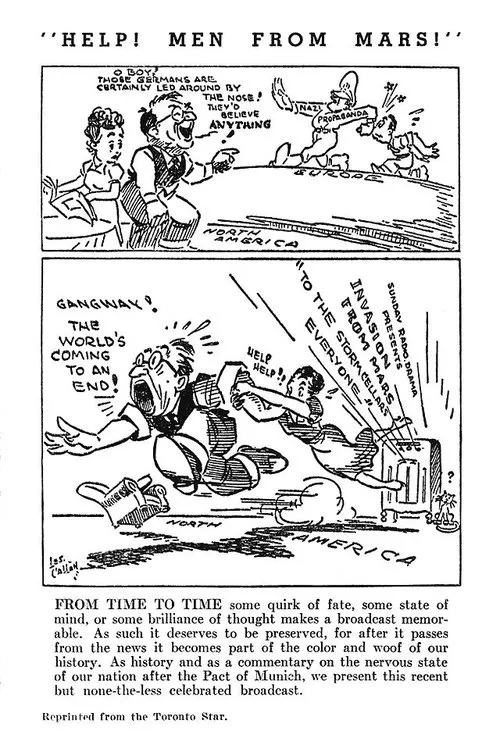The Night America Trembled

Intrigue
The Night America Trembled, a 1957 episode of the CBS anthology series "Studio One," is a thought-provoking drama that offers a unique perspective on the infamous 1938 radio broadcast of Orson Welles's adaptation of H.G. Wells's classic science fiction novel, The War of the Worlds. Directed by Jack Smight, the episode is a recreation and commentary on how people reacted to the initial broadcast, which caused widespread panic and hysteria among millions of listeners who believed a real alien invasion was underway. The drama begins with a narrator, played by Ed Nelson, who sets the stage for the events of October 30, 1938, a night that would become infamous in American history. The episode then cuts to a recreation of the CBS radio studio, where Orson Welles (played by John Beal) is directing the live broadcast of The War of the Worlds. Welles, a rising star at the time, had adapted the novel for radio as a Halloween broadcast, using a mix of music, sound effects, and news bulletins to create a sense of urgency and realism. As the broadcast begins, Welles starts to recount the story of a Martian invasion of New Jersey, using news bulletins and fake eyewitness accounts to bring the story to life. The episode effectively recreates the sense of confusion and panic that erupted among listeners, who were unable to distinguish between fact and fiction. Radio announcers, such as Carl Sandburg (played by Edward Andrews), and actors, like Paul Stewart (playing a radio announcer named Professor John Rockefeller Marden), start to report on the unfolding catastrophe, creating a sense of chaos and urgency. The reactions of listeners to the broadcast are cleverly interwoven into the drama, as people begin to call radio stations, newspaper offices, and even police departments, demanding to know the truth about the Martian invasion. The episode highlights the confusion, anxiety, and even hysteria that gripped the nation, as people believed that the end of the world was indeed near. One of the most striking aspects of The Night America Trembled is its ability to recreate the emotional atmosphere of the time. The episode effectively captures the innocence and naivety of the era, when people were more susceptible to believing fantastical stories. The use of archival footage and photographs from the time period adds a sense of authenticity, allowing the viewer to appreciate the historical significance of the event. As the drama unfolds, the reactions of the public become more and more absurd, with people believing that they have witnessed a real alien invasion. The episode pokes fun at the sensationalist reporting of the time, as newspapers and radio stations amplify the panic, creating a self-reinforcing cycle of fear and anxiety. The episode is also remarkable for its ability to capture the chaos and confusion of the moment, as authorities struggled to calm the panic, and the media tried to make sense of the unfolding drama. In the final scenes of the episode, Welles is portrayed as a somewhat bemused figure, struggling to understand why the broadcast has caused such a sensation. However, the episode does not simply portray Welles as a naive or insensitive figure; on the contrary, it highlights the creative genius and innovative spirit that led Welles to create such a groundbreaking production. The Night America Trembled is a thought-provoking drama that raises important questions about the power of media, the impact of technology, and the gullibility of the public. It serves as a fascinating commentary on the state of mass media in the 1930s and offers a unique perspective on the way people reacted to new and emerging technologies. The episode remains a compelling and entertaining watch, offering a captivating re-creation of a pivotal moment in American history.
Critiques
Recommandations


